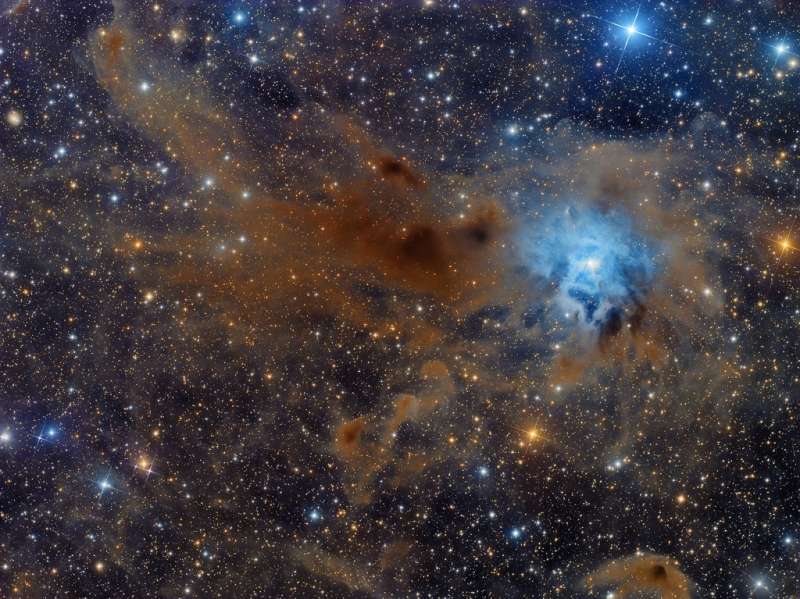Credit & Copyright: Federico Pelliccia
Explanation:
These cosmic clouds have blossomed 1,300 light-years away,
in the fertile starfields of the
constellation
Cepheus.
Called the Iris Nebula,
NGC 7023
is not the only nebula
to evoke the imagery of flowers, though.
Still, this
deep telescopic image
shows off the Iris Nebula's range of
colors and symmetries, embedded in surrounding
fields of interstellar dust.
Within the Iris itself, dusty nebular material surrounds a hot,
young star.
The dominant color of the brighter reflection nebula is blue,
characteristic
of dust grains reflecting starlight.
Central
filaments of the reflection nebula glow with a faint reddish
photoluminesence as some dust grains
effectively
convert the star's invisible
ultraviolet radiation to visible red light.
Infrared observations
indicate that this nebula contains
complex carbon molecules known as
PAHs.
The pretty blue petals of the Iris Nebula span about six light-years.
The colorful field-of-view stretches almost five Full Moons
across the sky.
1999 2000 2001 2002 2003 2004 2005 2006 2007 2008 2009 2010 2011 2012 2013 2014 2015 2016 2017 2018 2019 2020 2021 2022 2023 2024 2025 |
Yanvar' Fevral' Mart Aprel' Mai Iyun' Iyul' Avgust Sentyabr' Oktyabr' Noyabr' Dekabr' |
NASA Web Site Statements, Warnings, and Disclaimers
NASA Official: Jay Norris. Specific rights apply.
A service of: LHEA at NASA / GSFC
& Michigan Tech. U.
|
Publikacii s klyuchevymi slovami:
NGC 7023 - Tumannost' Iris - otrazhatel'nye tumannosti
Publikacii so slovami: NGC 7023 - Tumannost' Iris - otrazhatel'nye tumannosti | |
Sm. takzhe:
Vse publikacii na tu zhe temu >> | |
